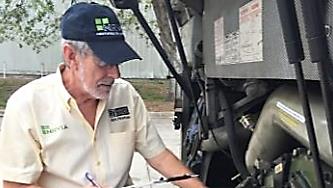Most service intervals (also known as Preventive Maintenance or “PM” schedules) call for oils and coolants to be changed based on accumulated mileage or on hours of use or elapsed calendar time. Changing oils and coolants is “generally” a good idea but often it’s not the most economical method of maintaining RV engine, transmission or generator fluids.
 Let’s say the fluids were changed too soon or before it’s necessary. If there’s still plenty of life left in them, that’s like throwing money down the drain. On the other hand, if you fail to change fluids when they’re worn out or contaminated, you take the chance of getting into some serious problems that can put your RV in the shop and drain your wallet. If you’re changing oils and coolants without having them analyzed, you’re missing out on some pretty important information that could make a real difference in your plans.
Let’s say the fluids were changed too soon or before it’s necessary. If there’s still plenty of life left in them, that’s like throwing money down the drain. On the other hand, if you fail to change fluids when they’re worn out or contaminated, you take the chance of getting into some serious problems that can put your RV in the shop and drain your wallet. If you’re changing oils and coolants without having them analyzed, you’re missing out on some pretty important information that could make a real difference in your plans.
Oil and coolant analysis is a useful diagnostic tool that offers you and your service technician a whole new level of understanding. It allows you to see inside the equipment and determine the true condition of your engine, transmission and generator. It improves your ability to assess these critical RV systems for wear and contamination that could lead to early failures if left unchecked. Fluid analysis enables you to observe systems at a “microscopic level”. This greatly improves your ability to learn about issues that need your attention so you can have them fixed at the earliest opportunity, long before serious problems occur. You’ll know when oils and coolants begin to break down or become contaminated and you’ll be able to see internal part wear issues if they exist.
In short, oil and coolant analysis increases your ability to detect minor problems and schedule repairs, if needed, before they result in breakdowns, repairs and lost travel opportunities. You just can’t get that from draining and replacing your RV oils and coolants.